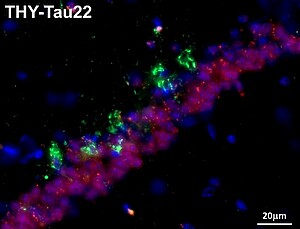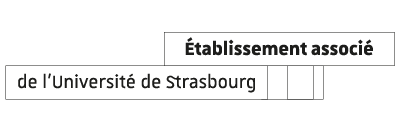Alzheimer's disease is a neurodegenerative disease for which there is no cure. Anne-Laurence Boutillier, researcher at the Laboratory of Cognitive and Adaptive Neuroscience, has managed to restore the functions of genetically modified mice with one of the marks of the disease, namely neurofibrillary tangles.
Through the observation of mechanisms that influence the expression of genes in a given cell, the epigenetic, Anne-Laurence Boutillier seeks to understand how neural networks are formed and how they are altered in neurodegenerative pathologies at a molecular level. "Some diseases are not due to mutation, yet there is a shift in gene expression. This could be due to a change in the epigenome, i.e. a change in how genes may or may not express themselves."
During her research, Anne-Laurence Boutillier has shown that an enzymatic protein called CBP (CREB Binding Protein), which acts on the epigenome by modifying the histones by acetylation, was degraded in amyotrophic lateral sclerosis, a serious incurable degenerative disease. "This enzyme plays a crucial role in development, and a leading role in cerebral plasticity in the adult brain."
The meeting that was to change everything
At this time, by chance, the researcher met an Indian researcher, Tapas Kundu, at a conference. The latter demonstrated that there are molecules capable of activating this enzyme and thus modifying the epigenome. "We had the idea to test the reactivation of the enzyme in vivo with these molecules and look at its effects on memory". Result: the treated mice develop a longer retention capacity. The discovery was published in the Journal of Neuroscience.
On the strength of this observation and always in collaboration with the Indian laboratory, the researcher decided to take an interest in the epigenetic problems induced in Alzheimer's disease. To do this, she performed tests in a mouse model called Tau. The latter, created by a laboratory in Lille, overexpresses one of the marks present in Alzheimer's disease, namely neurofibrillary tangles.
Proof of concept
Anne-Laurence Boutillier noted that there is less acetylation of histones in the hippocampus of diseased mice. "We treated these mice with a molecule that activates CBP and acetylates the histones. It restores neuronal activity, plasticity and memory in this mouse model." This discovery provides proof of the concept that an in vivo treatment with a CBP activating molecule is possible.
The only downside: the molecule dissolves very badly, "it must be coupled to a nanosphere of carbon to pass the cell membranes," explains Anne-Laurence Boutillier, who will continue her research by looking if there are other signatures of modified epigenetics in Alzheimers mice. "I would also like to understand what part ageing plays in the disease and to study the effects of environmental alternatives such as social enrichment, physical enhancement, stimulations ... on the epigenome."

















